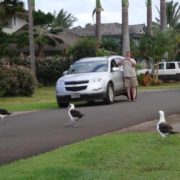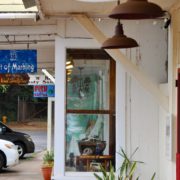Kauai Laysan Albatross “What are those big birds walking across the street?”

Every year in early November, Laysan albatrosses begin to arrive on Kauai. Some come to nest, others to find a mate. When they are not here, they are out at sea, often flying as far north as Alaska and the Aleutian Islands. They may rest on the water, but they will not touch land until they return here. Most albatrosses live on islands not that are not inhabited by human beings. Kauai is the only place in the world where albatrosses can be found in residential areas and on golf courses.
One year a chick from a nest next to a fairway was determined to sit there on the manicured lawn instead of near his nest. A message was included on all golf carts warning the visitors to watch out for him. They did.
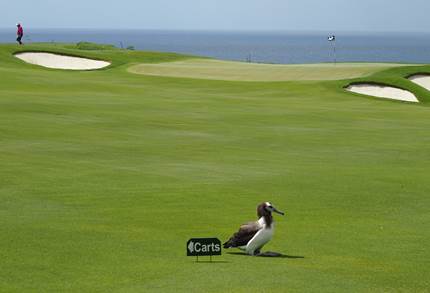
The majority of he world’s Laysan albatrosses live on Midway, site of a famous WWII battle and home to over a million seabirds. Midway is the home of Wisdom, an albatross in her sixties who is still raising chicks. There are smaller colonies of these albatrosses on islands off of Mexico and on Oahu and Kauai. Many of the Laysan albatrosses that come to Kauai were raised here. Albatrosses have been nesting on the North Shore since the 1970s. They will almost always return to the area where they grew up. All of the birds without mates will participate in elaborate displays that somehow help them to find the perfect one to nest with. Not even construction can keep them away from their favorite spots.

An albatross that will be nesting does not spend much time displaying. Mated pairs sit close together and gently groom each other. They show great affection for each other. Choosing the right mate is the most important decision of their lives. They need someone who will share nesting duties: incubation of the egg, protection of the newly hatched chick, and the feeding of that chick until fledging time. They often mate for life, although divorces are not unheard of.

As the chick gets older and requires more to eat, the parents will fly further away from Hawaii. They will have to leave the chicks alone in their nests. Some visitors worry that a chick may have been abandoned, but the parents must spend all of their time finding food. They feed the chick squid, small fish, flying fish eggs and crustaceans. Unfortunately, every feeding also includes some plastic, which is now quite prevalent on the ocean’s surface. At five or six months, the chicks will take their first flight, leaving Kauai and not returning until they are at least three years old.
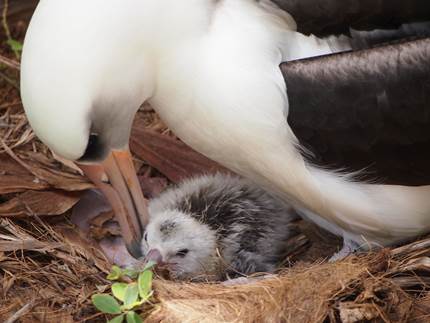
Albatrosses do not appear to be afraid of people, and it is very tempting to treat them like the birds people often feed in their yards. But an albatross must learn to survive in harsh environments, not just on a lawn with people who like them. It is safer for them to avoid other species that share their world; some of them may prove to be a threat. In the past, some have been killed or injured by unleashed dogs, and there are some people that do not appreciate them and harass them. A good rule of thumb is to stay at least fifteen feet away from an albatross, if possible. They may not look nervous to you, but a bird does not always react to stress the way a pet or a person might. A sign may be put up to remind people to stay back.

Occasionally concerned people will leave food near the nesters or chicks. This food can attract predators and can also expose the birds to bacteria that can harm them. A nesting couple takes turns incubating the egg and flying out to sea to feed themselves, they will not starve. They both feed their chick. In some cases, their parents feed them so well that the chicks must actually lose weight before fledging, Enjoy your time on Kauai, and remember the time you were treated to a glimpse into the life of the Laysan albatross—-devoted mate, dedicated parent, and a connection to all that is wild and beautiful.
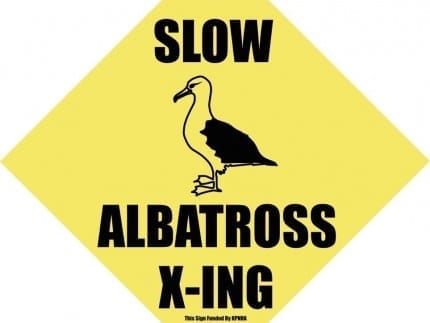
Note from the Author Cathy Granholm:

